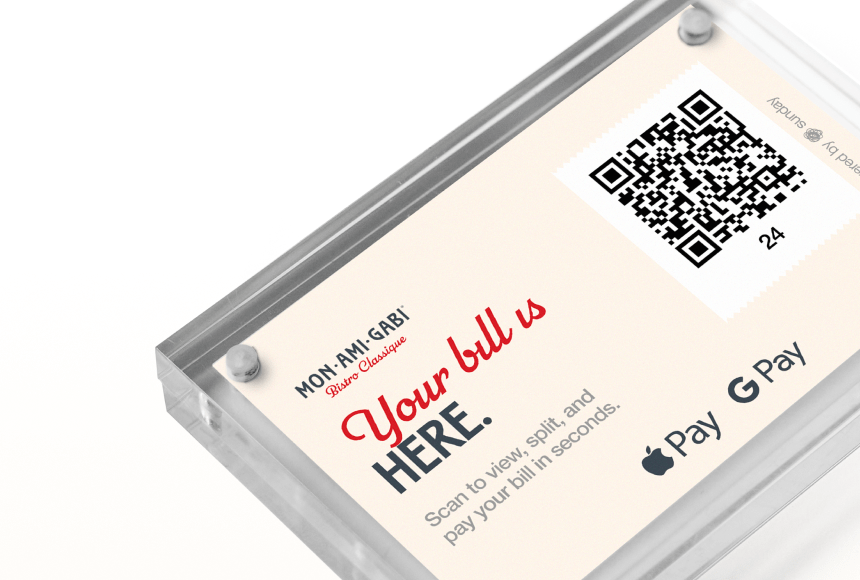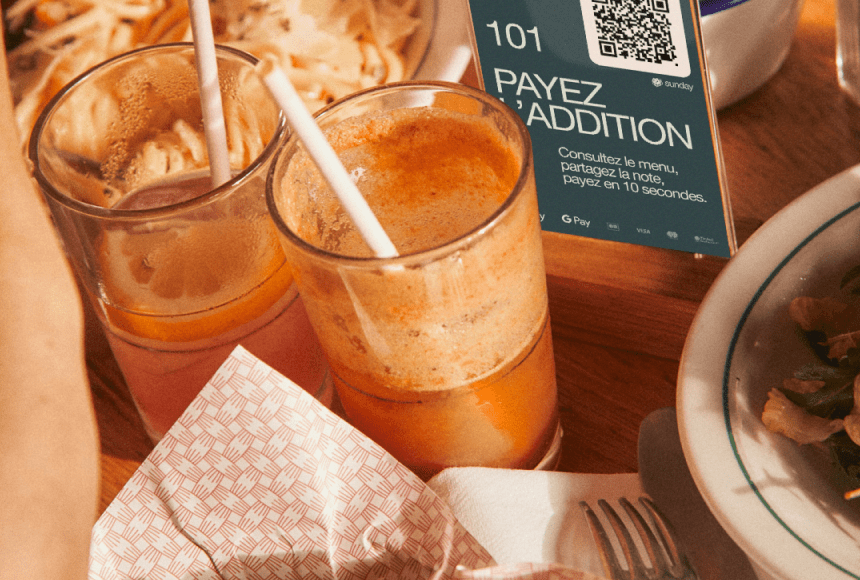
Empower Your Team With a Rapid Restaurant Onboarding Strategy
Why Speedy Onboarding Matters
In the restaurant world, a lot can happen in just five minutes: a table of four might arrive in the dining room, your chef could plate multiple entrées, or a drive-through line might form outside. Time is truly of the essence. With high employee turnover rates—hovering around 70% annually in many establishments according to the National Restaurant Association—you need an onboarding process that ramps up new hires fast. Traditional training methods can sometimes feel like a marathon, draining resources while new staff struggle to keep pace. Instead, swift, purposeful onboarding ensures your frontline remains prepared, productive, and motivated from day one.
The key is to empower new hires effectively, rather than overwhelming them. When you focus on structured and efficient onboarding, new employees gain confidence quickly. The result? They provide better guest experiences, fit seamlessly into your team, and stick around longer. Below, you’ll find practical strategies to help you get your new staff ready to serve in record time.
Laying the Foundations With Clear Documentation
Every masterpiece begins with a recipe. In the restaurant business, that recipe is your training material—and having it well-organized saves you and your new hires from confusion. A streamlined and accessible set of documents is essential for clarity. Whether it’s your dress code, hygiene instructions, or opening/closing procedures, make these guidelines concise yet thorough.
Here are a few tips for creating effective documentation:
- Keep it visually appealing: Large blocks of text lose attention. Use simple graphics or bullet points for key steps.
- Go digital: Provide manuals in easy-to-download formats or use cloud-based folders for fast access.
- Update regularly: Shifting recipes, new technology, or new health guidelines? Revise your docs immediately. Keep everything up-to-date so new hires don’t start off with outdated info.
- Encourage questions: The best documentation invites conversation. Promote a culture where employees feel comfortable clarifying points—they might have great ideas for improvements, too.
When you hand new hires a clear “how-to” library from the start, you build confidence and independence. This foundation reduces repetitive questions and frees your management team to do more valuable tasks, such as mentoring or perfecting that weekend brunch menu.
Shadowing and Cross-Training for Faster Mastery
Ever heard the phrase, “Tell me and I forget, teach me and I remember, involve me and I learn”? Shadowing allows new team members to learn from experienced employees in real time. By watching a veteran server handle a busy dinner rush, for instance, a newcomer quickly understands the art of prioritizing tasks, reading guests’ needs, and handling stress with grace.
Cross-training goes one step further, giving your staff a broader skill set. That line cook who understands the basics of bussing can lend a hand when the dining area is slammed—and vice versa. Here’s how to incorporate shadowing and cross-training into your onboarding:
- Start in Small Bites: Pair the new hire with one seasoned team member for a shift. Encourage them to observe crucial tasks, such as how to answer the phone or offer menu recommendations.
- Rotate Roles: After they’ve done initial shadowing, let them try different parts of the operation. Host with the front-of-house, prep with the kitchen staff, and stock items with the bar team. This fosters versatility and improves collaboration across departments.
- Encourage Active Participation: As soon as the newcomer feels comfortable, let them take the reins. Whether it’s handling a table on their own (under supervision) or prepping a dish, hands-on experience cements learning.
- Provide Gentle Feedback in Real Time: Positive reinforcement mid-action is far more effective than a stack of notes at the end of the shift. A simple “Great job handling that customer concern, but next time try simplifying how you describe appetizers” can go a long way.
By embracing shadowing and cross-training, you’re not just aiding newcomers, you’re building a cohesive team that can adapt to any situation. This accelerates onboarding and ensures smooth operations, especially during peak hours.
Utilizing Technology for Accelerated Learning
Restaurants have come a long way from bulky cash registers and handwritten orders. Today’s tech solutions can significantly speed up employee onboarding. One example is the digital payment solution offered by sunday, which streamlines the check-out process, leaving staff more time to focus on guest interaction and less time wrestling with payment terminals. Incorporating such tools from day one shows new hires just how efficient your establishment can be.
Here are a few ways technology can reduce training time:
- Video Tutorials: Host short, focused instructional clips for tasks like table setting or point-of-sale use. Visual aids help employees learn faster than text-heavy manuals.
- Certification Platforms: For positions requiring compliance training—like alcohol service or food safety—online certification programs let new hires learn at their own pace, quickly demonstrating they’ve mastered the essentials.
- Apps and Mobile Tools: There are scheduling apps that reduce confusion about shifts and smartphone shortcuts for tableside ordering. By syncing these apps with your new hires’ phones, you cut the time spent on back-and-forth communication.
- Customer Engagement Solutions: Tools like sunday not only speed up payment but also allow staff to engage with guests efficiently. Empower new servers and bartenders to get comfortable with the technology early on, so they shine during hectic meal periods.
By guiding staff through relevant tech platforms as soon as they start, you’ll reduce errors, speed up processes, and inspire confidence. Plus, you’ll be painting a dynamic image for your restaurant—one that isn’t afraid to evolve with the times.
Encouraging a Mentorship Culture
In the fast-paced environment of hospitality, many managers focus purely on functional training: how to punch in orders, how to greet guests, and which specials to spotlight. But behind every successful restaurant is a team that genuinely works well together. When you cultivate a mentorship culture, you’re not just creating doers—you’re creating the next generation of leaders for your establishment.
Whether your new hire is an eager line cook or a budding sommelier, pairing them with a seasoned pro can make all the difference. A mentor offers real-world context that goes beyond the job description, sharing subtle nuances such as how to gracefully navigate a sudden menu 86 or how to handle a special request from a regular. This personal connection fosters a sense of belonging, speeding up the integration process.
Remember:
- Give Mentors a Roadmap: Equip senior staff with a checklist of training goals and conversation starters. This ensures they’re not just “winging it” when guiding new arrivals.
- Check In On Both Sides: Regularly ask mentors and mentees about their experiences. Are there challenges you can help with? Extra support or clarifying details can elevate the mentor-mentee relationship.
- Recognize Mentors Publicly: If mentors feel valued for their efforts, they’re more likely to invest energy into training. A short shout-out during a staff meeting or a note on the break room board can mean a lot.
By creating an environment where your veterans pass along wisdom and best practices, your new hires quickly develop the grit and savvy your restaurant needs. Think of it like passing down a prized family recipe—each time it’s shared, it grows stronger and more refined.
Ongoing Feedback, Coaching, and Recognition
Once an employee has finished initial training, the process isn’t over. In fact, day one is just the appetizer. Consistent, meaningful feedback helps your new employee grow into their role. When your staff feels encouraged to seek insight, they gain confidence, blow away performance targets, and, more importantly, deliver memorable guest experiences.
Incorporate these steps for continual development:
- Conduct Frequent Check-ins: A quick, five-minute one-on-one can clear up questions and complexities more effectively than a quarterly review.
- Offer Immediate Input: Don’t wait for formal sessions to address a minor misstep. If a server forgets to upsell a daily special, give them a quick reminder. The memory is fresh, and the lesson sticks.
- Celebrate Small Wins: Did they handle a guest complaint elegantly? Did they memorize the cocktail list in record time? Share your appreciation. Recognition goes a long way in boosting morale.
The idea is to help new staff continuously sharpen their skills, eventually rolling out the red carpet for them to become your next set of mentors. According to a study by Gallup, employees who receive regular feedback are more engaged and have higher productivity levels. That definitely bodes well for a busy restaurant environment.
All the Right Ingredients for Rapid Integration
Swift onboarding doesn’t mean cutting corners. Think of your new hire as a key ingredient in a recipe for success: you must treat them with care, provide them with the right support, and blend them into the existing team environment. By crafting a thoughtful approach—from structured documentation and blazing-fast tech to mentorship and ongoing coaching—your new staff will develop confidence and skill at an unprecedented pace.
There’s also a financial angle to this. Every day a role goes unfilled or a new hire remains unproductive can impact both guest satisfaction and bottom-line results. Accelerating the onboarding process means reducing mistakes, increasing table turnover, and improving customer experiences (which often translates to positive online reviews). In short, an efficient training approach can directly boost your profits.
Creative Ways to Reinforce Training
Once the basics are covered—your new hires know how to greet guests, where to find the condiment station, or how to ring up an item correctly—it’s time to harness creativity. Keeping staff engaged in their training fosters a sense of ownership and curiosity, preventing the dreaded “boredom plateau.”
Consider these extra steps:
- Gamify Tasks: Create friendly contests like “most thorough table greeting” or “best dessert upsell” for servers. Small prizes—like a free appetizer or early pick for scheduling—can spark healthy competition and faster learning.
- Incorporate Culinary Adventures: Invite kitchen newbies to taste-test new dishes, giving them an edge when describing menu items to guests. This personal experience with the flavors and textures can significantly speed up confidence.
- Host Mini Workshops: Conduct short after-hours sessions on beverage tasting or advanced plating techniques. This specialized knowledge can elevate their enthusiasm and skill set.
- Encourage Peer Learning: Invite staff to share short demonstrations of their best “hack” or approach for a task—such as doubling up on silverware polishing or memorizing the daily specials. This fosters teamwork and keeps SOPs fresh.
By layering fun, hands-on experiences into your onboarding, you ensure each team member not only learns the ropes but also feels truly invested in your restaurant’s growth.
Bringing It All Together
From speedy, clear documentation to real-time shadowing, supportive technology, and continuous feedback, thoughtful onboarding inspires a stronger, more cohesive workforce in less time. Ultimately, your guests benefit from staff who effortlessly handle high volumes and deliver memorable dining experiences.
When you bring new employees on board in a structured, welcoming way, you set them (and your entire establishment) up for success. Instead of waiting weeks for a new server or line chef to “get the hang of things,” you can confidently empower them, letting their talents shine at a quicker rhythm. After all, a restaurant is only as strong as its team, and quick, efficient onboarding is the secret ingredient to that satisfying harmony we all crave.
Remember, the first few weeks for any new hire are crucial in shaping how they view your restaurant. By championing clear guidelines, personal mentorship, useful tools like sunday, and a pinch of creativity, you’re building an environment where staff aren’t just workers—they’re brand ambassadors. And they can start acting like it pretty much from the moment they put on that apron.
When you invest in strategies that help employees seamlessly integrate into your daily operation, everyone wins: you, your staff, your guests, and ultimately, your restaurant’s future success. So get ready—by prioritizing an onboarding process that’s well-structured and ready to go, you’ll see your team flourish with confidence, passion, and efficiency. Onboarding doesn’t have to be a slow-burn process; with the right approach, it becomes an exciting sprint toward excellence.
Find out more today
Drop us your details below and we’ll reach out within the next 24h
More tips means a better service.
More tips mean better guest-experience, and better staff-retention.




